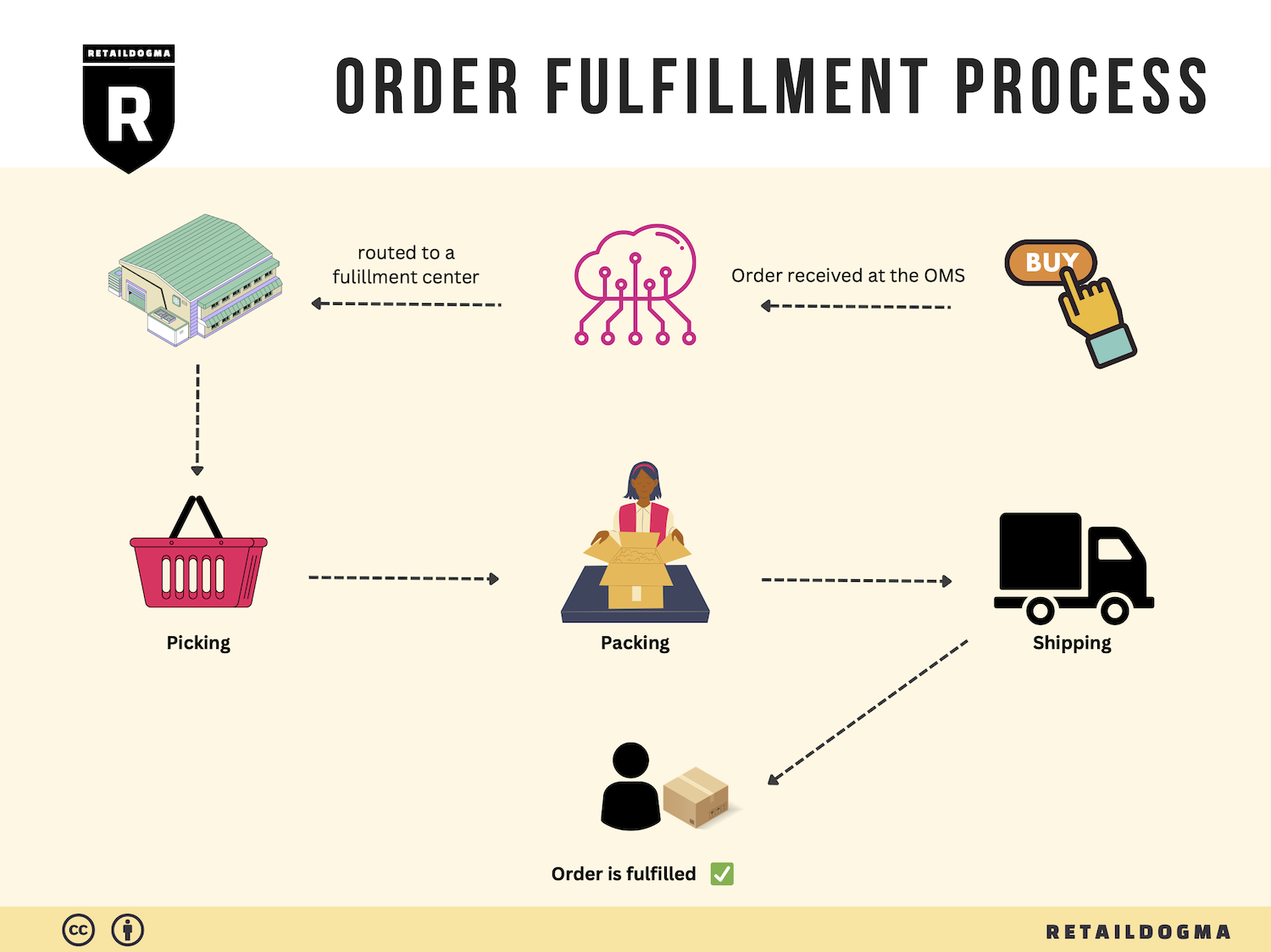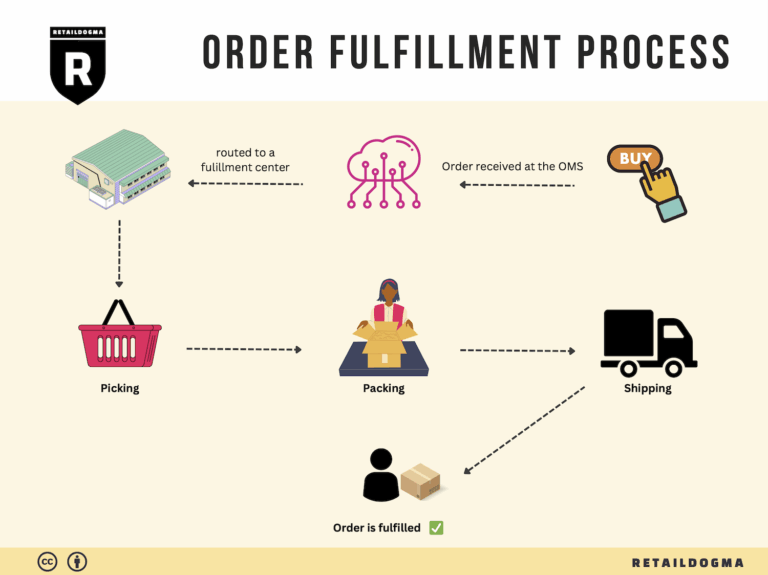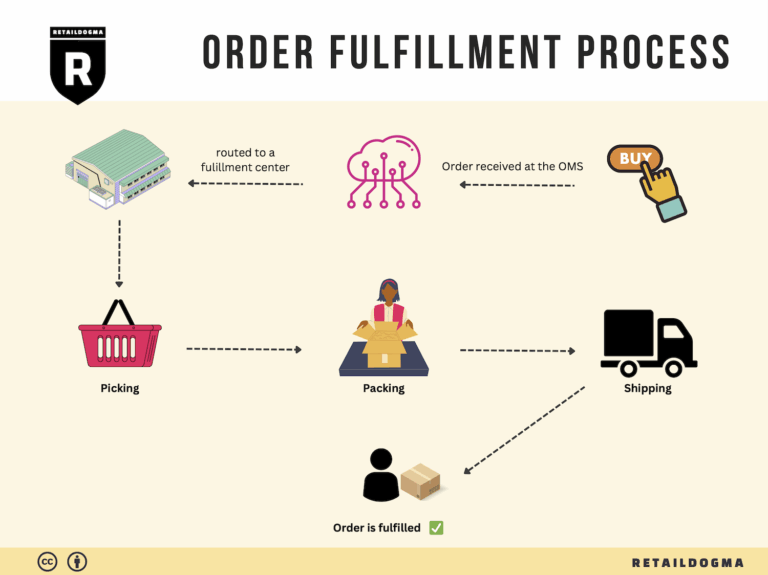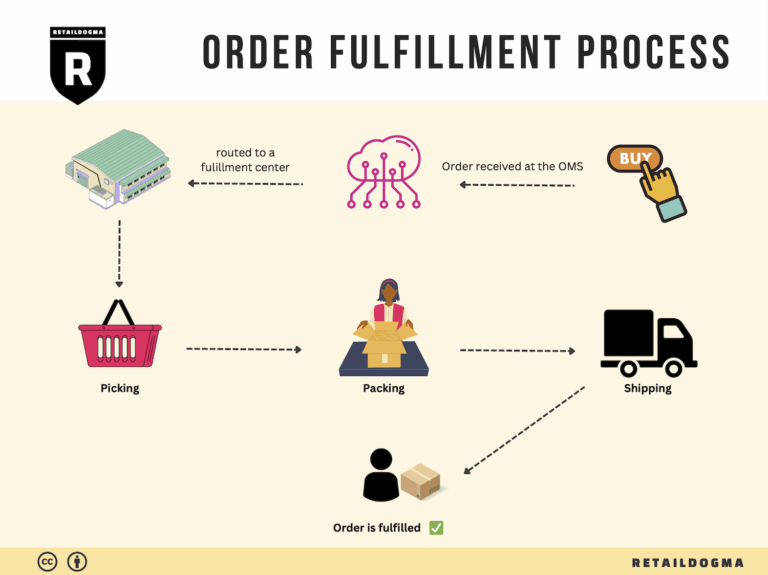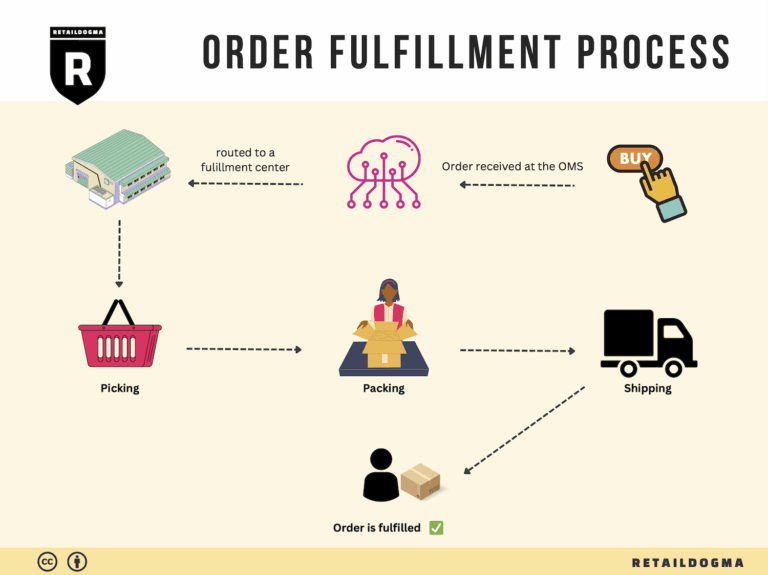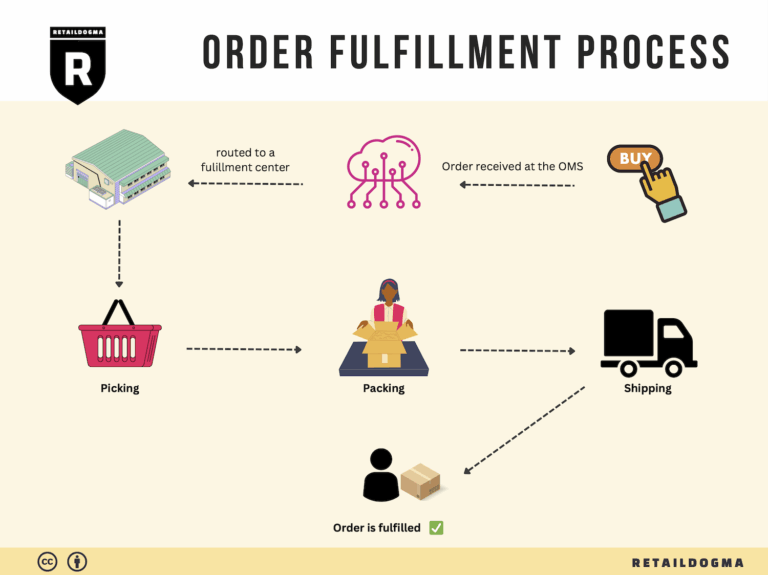How Order Fulfillment Works: A Step-by-Step Guide for Businesses
What is E-commerce Fulfillment? An Introduction for Growing Businesses
Understanding E-commerce Fulfillment
For many growing e-commerce businesses, the excitement of increasing sales can quickly turn into overwhelm when it comes to packing and shipping orders. As orders pile up, the logistics of getting products into the hands of customers can become a daunting task. This is where e-commerce fulfillment comes into play, serving as a vital lifeline to streamline your operations.
At its core, fulfillment is the process of getting a product from your warehouse to your customer’s doorstep. It involves several critical steps, including inventory management, order processing, picking and packing items, shipping, and handling returns. When managed efficiently, fulfillment can enhance customer satisfaction, improve delivery times, and ultimately drive repeat business. However, as your business scales, the complexity of fulfillment increases, making it essential to understand your options and strategies.
In this guide, we will explore various fulfillment models available to e-commerce businesses. You’ll learn about Third-Party Logistics (3PL) providers, who can manage your warehousing and shipping needs, and Fulfillment by Amazon (FBA), which allows you to leverage Amazon’s vast logistics network. Understanding the differences between these models will help you make informed decisions that align with your business goals.
Additionally, we will cover the core services typically offered by fulfillment providers, including inventory management, order tracking, and returns processing. Knowing what services are available can help you choose a partner that meets your specific needs and enhances your operational efficiency.
Choosing the right fulfillment partner is crucial for your business’s success. This guide will provide practical tips on evaluating potential partners, including assessing their technology capabilities, service levels, and pricing structures. Understanding how fulfillment pricing works will empower you to negotiate contracts and budget effectively, ensuring that you maintain healthy profit margins.
Ultimately, our goal is to equip you with the knowledge and tools necessary to make smart decisions about your logistics. By understanding e-commerce fulfillment and its intricacies, you can focus on what you do best—growing your business and delighting your customers.
What You’ll Learn In This Guide
- What is E-commerce Fulfillment? An Introduction for Growing Businesses
- The Order Fulfillment Process: From ‘Buy’ Button to Customer’s Door
- Comparing Fulfillment Models: In-House vs. 3PL vs. Dropshipping
- A Deep Dive into Amazon FBA: Pros, Cons, and Who It’s For
- Core Services Offered by Fulfillment Centers
- How to Choose a Fulfillment Partner: A 6-Point Checklist
- Understanding Fulfillment Pricing: A Breakdown of Common Fees
- Frequently Asked Questions (FAQs) about Fulfillment
- Conclusion: Is Outsourcing Fulfillment the Right Move for Your Business?
- Important Disclaimer
The Order Fulfillment Process: From ‘Buy’ Button to Customer’s Door
1. Receiving Inventory
The first step in the order fulfillment process is receiving inventory. This involves the acceptance of goods from suppliers and the systematic checking of these items against purchase orders to ensure accuracy. This process is crucial because it lays the foundation for effective inventory management. Any discrepancies—such as damaged goods or incorrect quantities—must be identified and addressed immediately to prevent downstream issues.
During this stage, it’s essential to assign a Stock Keeping Unit (SKU) to each product. An SKU is a unique identifier that helps track inventory levels, sales, and product locations within the warehouse. Properly managing SKUs not only enhances inventory accuracy but also streamlines subsequent processes, making it easier to locate items quickly when orders come in.
2. Warehouse Storage
Once inventory is received and checked, the next step is warehouse storage. This process involves organizing and storing products in a systematic manner within the warehouse. Effective storage solutions can vary from shelves and bins to pallets and racks, depending on the product type and warehouse layout.
The importance of this step cannot be overstated; a well-organized warehouse minimizes the time spent locating products, thereby increasing efficiency. Implementing a Warehouse Management System (WMS) can significantly enhance this process by automating inventory tracking and optimizing storage space. A key term in this stage is “slotting,” which refers to the strategic placement of products based on their sales velocity and size, ensuring that fast-moving items are easily accessible.
3. Order Picking
Order picking is the process of retrieving items from their storage locations to fulfill customer orders. This step is critical as it directly impacts order accuracy and customer satisfaction. Efficient picking reduces the time between order receipt and shipment, which is vital in today’s fast-paced e-commerce environment.
A common method for facilitating order picking is the use of pick lists, which are generated from the order details and guide warehouse staff on which items to collect and their respective locations. Different picking strategies, such as single order picking, batch picking, or zone picking, can be employed based on the volume of orders and the layout of the warehouse. The effectiveness of this step can significantly influence operational costs and customer experiences.
4. Order Packing
After items are picked, they move on to the order packing stage. This involves carefully packaging the products to ensure they are protected during transit and presented attractively to the customer. Proper packing is essential not only for preventing damage but also for optimizing shipping costs and enhancing the customer experience.
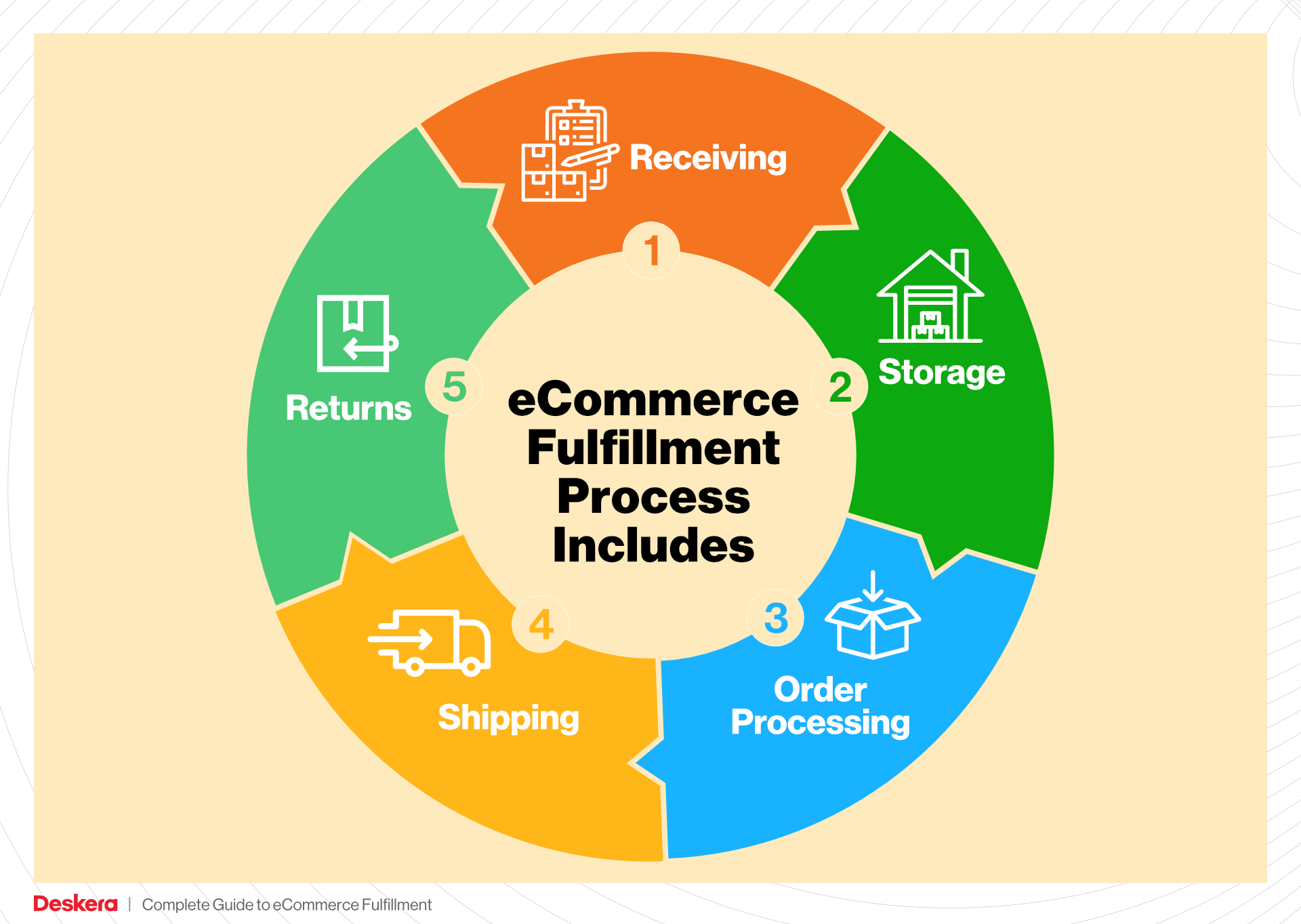
During this process, businesses should consider using branded packaging, which can reinforce brand identity and increase customer loyalty. A key term associated with this stage is “dimensional weight,” which refers to the calculation of shipping costs based on package dimensions rather than just weight. Understanding dimensional weight helps businesses choose the right packaging materials and sizes to minimize shipping expenses while ensuring product safety.
5. Shipping & Delivery
The final step in the order fulfillment process is shipping and delivery. Once orders are packed, they are handed off to logistics carriers for transportation to the customer. The choice of shipping method—whether standard, expedited, or same-day delivery—can greatly affect customer satisfaction and operational costs.
It’s crucial for businesses to provide customers with tracking information, allowing them to monitor their order status in real-time. This transparency builds trust and enhances the overall customer experience. A vital term in this stage is “last mile delivery,” which refers to the final leg of the shipping journey from the distribution center to the customer’s doorstep. Efficient last mile delivery strategies can significantly reduce shipping times and costs, directly influencing customer satisfaction and repeat business.
By understanding and optimizing each of these five steps—receiving inventory, warehouse storage, order picking, order packing, and shipping & delivery—e-commerce businesses can create a streamlined order fulfillment process that not only meets but exceeds customer expectations, ultimately driving growth and success.
Comparing Fulfillment Models: In-House vs. 3PL vs. Dropshipping
Fulfillment Model Comparison
| Model | Who Handles Inventory | Best For (Business Stage) | Key Advantage | Key Disadvantage |
|---|---|---|---|---|
| In-House Fulfillment | The business itself | Established businesses with stable sales | Full control over inventory and operations | High overhead costs and complexity |
| Third-Party Logistics (3PL) | A specialized logistics provider | Growing businesses needing flexibility | Scalability and reduced operational burden | Less control over the fulfillment process |
| Dropshipping | Suppliers or manufacturers | Startups and small businesses | Low upfront investment and risk | Lower profit margins and dependency on suppliers |
In-House Fulfillment
In-house fulfillment involves managing all aspects of inventory, warehousing, and shipping within the business itself. This model is typically suited for established businesses that have a stable sales volume and can justify the overhead costs associated with maintaining a warehouse and staffing for order fulfillment. The primary advantage of in-house fulfillment is the level of control it offers; businesses can oversee every aspect of the process, from inventory management to quality control and shipping speed. This control can lead to improved customer satisfaction, as companies can ensure that products are stored, handled, and shipped according to their specific standards.
However, in-house fulfillment also comes with significant disadvantages. The costs associated with maintaining a warehouse, hiring staff, and managing logistics can be substantial, especially for smaller businesses or those experiencing fluctuating sales volumes. Additionally, the complexity of operations can strain resources and distract from core business activities such as marketing and product development. As a result, in-house fulfillment is often best for businesses that have achieved a certain level of maturity and are prepared to invest in their logistics capabilities.
Third-Party Logistics (3PL)
Third-party logistics (3PL) providers offer businesses the opportunity to outsource their fulfillment processes to specialists. This model is particularly beneficial for growing businesses that require flexibility in their logistics operations. By partnering with a 3PL, companies can scale their operations quickly without the need to invest heavily in warehousing or logistics infrastructure. 3PL providers typically have established networks and systems in place, allowing for faster shipping, better inventory management, and often lower shipping costs due to their volume discounts.
The key advantage of using a 3PL is the ability to focus on core business functions while leaving logistics to experts. This arrangement can free up resources and time, allowing businesses to concentrate on marketing, sales, and customer service. However, the downside of working with a 3PL is the reduced control over the fulfillment process. Companies may encounter issues related to communication, inventory accuracy, and shipping times, which can impact customer satisfaction. Therefore, it is crucial for businesses to select a reliable 3PL partner that aligns with their operational needs and customer expectations.
Dropshipping
Dropshipping is a fulfillment model where the retailer does not hold inventory but instead transfers customer orders and shipment details to a supplier, who then ships the products directly to the customer. This model is often favored by startups and small businesses due to its low upfront investment and minimal risk. Because there is no need to maintain inventory or manage a warehouse, entrepreneurs can launch e-commerce stores with relatively low financial commitment.
The main advantage of dropshipping lies in its low barrier to entry. Businesses can test various products and markets without significant financial exposure, making it an attractive option for those looking to enter the e-commerce space. However, dropshipping also presents several challenges. The most notable is the lower profit margins, as retailers typically pay wholesale prices to suppliers while charging retail prices to customers. Additionally, reliance on suppliers can lead to issues such as stock shortages, shipping delays, and quality control problems, which can negatively impact customer satisfaction. To succeed with dropshipping, businesses must carefully select reliable suppliers and maintain clear communication to ensure a smooth fulfillment process.
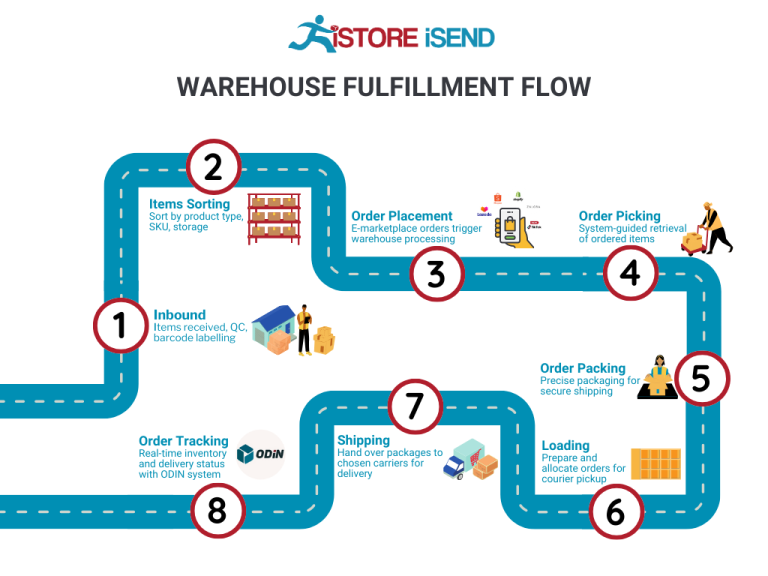
In conclusion, choosing the right fulfillment model depends on various factors, including the stage of the business, financial resources, and operational capabilities. Each model—whether in-house fulfillment, third-party logistics, or dropshipping—offers distinct advantages and disadvantages that can significantly impact a business’s scalability and customer satisfaction. Business owners must evaluate their specific needs and goals to determine the most suitable fulfillment strategy for their operations.
A Deep Dive into Amazon FBA: Pros, Cons, and Who It’s For
Understanding Fulfillment by Amazon (FBA)
Fulfillment by Amazon (FBA) is a service provided by Amazon that allows sellers to store their products in Amazon’s fulfillment centers. Amazon then takes care of storage, packaging, and shipping of the products directly to customers. This service not only simplifies logistics for sellers but also enhances their visibility on the Amazon marketplace, as products fulfilled by Amazon are often prioritized in search results and are eligible for Amazon Prime.
How FBA Works
-
Registration: Sellers need to create an Amazon seller account and enroll in the FBA program. This can be done through the Amazon Seller Central platform.
-
Inventory Preparation: Sellers prepare their products according to Amazon’s guidelines, which include labeling and packaging requirements. This step is crucial for ensuring that products are ready for efficient handling once they reach Amazon’s warehouses.
-
Shipping Inventory: Once the products are prepared, sellers ship them to Amazon’s fulfillment centers. Amazon provides shipping labels and guidance on how to send products to their warehouses.
-
Storage: Products are stored in Amazon’s warehouses until they are sold. Sellers can monitor their inventory levels through the Seller Central dashboard.
-
Order Fulfillment: When a customer places an order for a product, Amazon handles the entire fulfillment process. This includes picking, packing, and shipping the product directly to the customer.
-
Customer Service: Amazon also manages customer service and returns for FBA products, allowing sellers to focus on other aspects of their business.
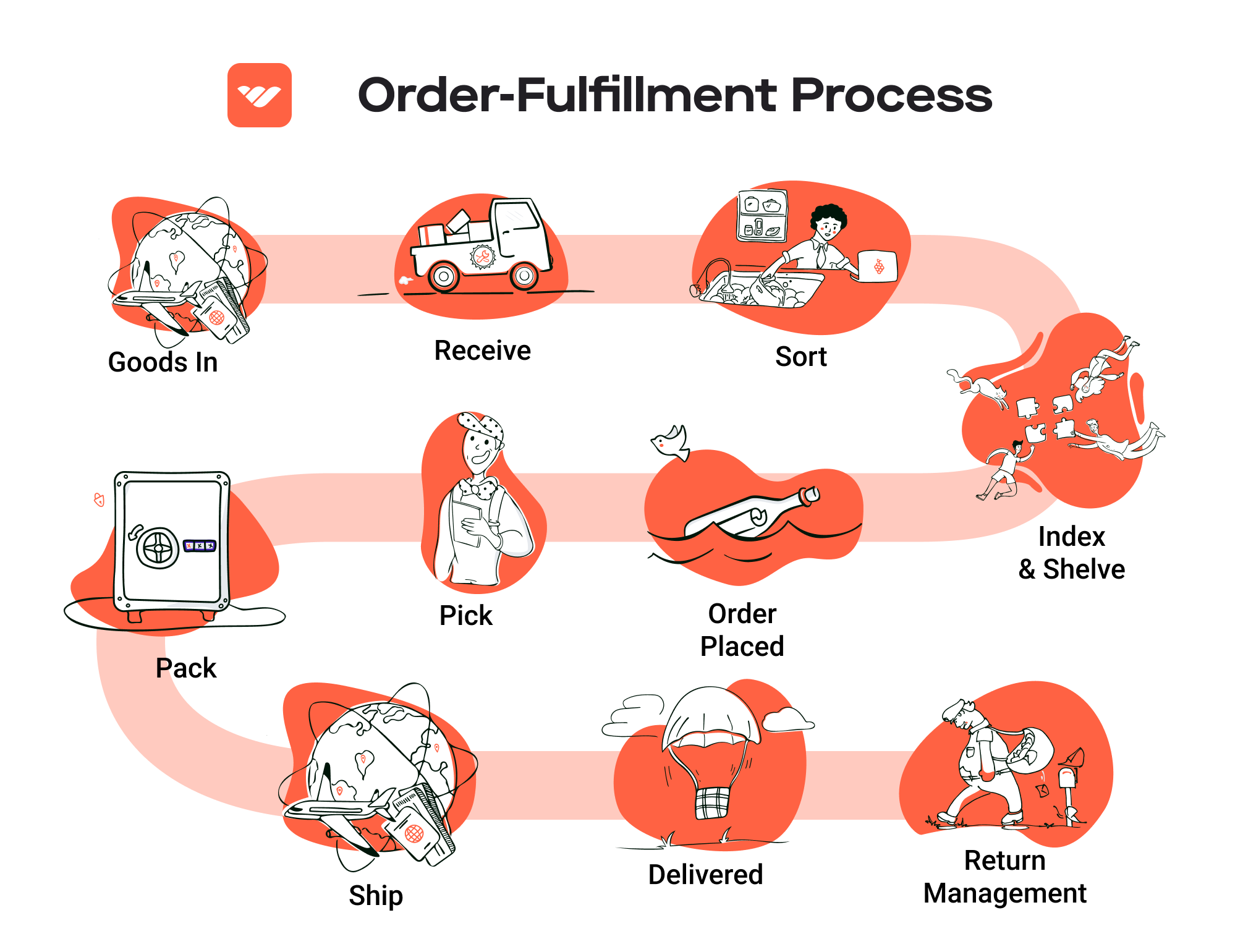
-
Payment: Sellers receive payments for their sales after Amazon deducts their fees, which vary based on the size and weight of the products, among other factors.
Pros of FBA
1. Prime Eligibility
One of the standout advantages of using FBA is that products become eligible for Amazon Prime. This exposure significantly increases sales potential, as Prime members often prefer products that offer free and fast shipping.
2. Customer Trust
Amazon is known for its reliable shipping and customer service. By using FBA, sellers can leverage Amazon’s reputation, which can enhance customer trust and lead to higher conversion rates. Products fulfilled by Amazon are often perceived as more credible.
3. Multi-Channel Fulfillment
FBA allows sellers to fulfill orders not just on Amazon, but also from other sales channels, such as eBay or their own websites. This multi-channel fulfillment capability streamlines operations and enables sellers to manage inventory in one place.
4. Automated Logistics
FBA automates many logistics processes, including inventory management, packing, and shipping. This efficiency can free up valuable time for sellers, allowing them to focus on marketing and product development.
5. Scalable Operations
FBA is particularly beneficial for businesses looking to scale quickly. Sellers can increase their inventory without worrying about logistics, as Amazon handles the storage and shipping.
Cons of FBA
1. High Fees
While FBA provides numerous benefits, it comes with significant costs. Sellers must pay for storage, fulfillment, and additional services such as labeling. These fees can quickly add up, impacting profit margins, especially for low-cost items.
2. Strict Inventory Rules
Amazon has strict rules regarding inventory management, including limits on the amount of inventory that can be stored in their warehouses. Sellers must closely monitor their stock levels to avoid excess storage fees or stockouts.
3. Commingling Risks
FBA products are often commingled, meaning that inventory from different sellers may be stored together. This can lead to issues if a seller’s products are damaged or if counterfeit items are shipped to customers, which can harm a seller’s reputation.
4. Loss of Control
When using FBA, sellers relinquish control over the fulfillment process. This can be concerning for brands that prioritize specific handling or packaging requirements.
5. Complex Returns Process
Although Amazon handles returns, the process can be complex for sellers, particularly if they need to track returned items or manage inventory discrepancies.
Who is FBA Best For?
Fulfillment by Amazon is ideal for a variety of sellers, particularly those who:
-
New Businesses: Startups looking to enter the e-commerce space can benefit from Amazon’s established logistics and customer base without needing to build their own fulfillment infrastructure.
-
High-Volume Sellers: Businesses that sell a large volume of products can leverage the scale of Amazon’s fulfillment centers to reduce shipping times and costs.
-
Brands Seeking Visibility: Brands that want to enhance their visibility on Amazon and tap into the Prime customer base will find FBA advantageous.
-
Sellers with Limited Logistics Experience: Those who lack experience in managing logistics and fulfillment can rely on Amazon’s expertise, allowing them to focus on sales and marketing.
In conclusion, while Fulfillment by Amazon presents numerous advantages, including increased visibility and simplified logistics, sellers must carefully consider the associated fees and inventory management challenges. Businesses that align well with FBA’s strengths are likely to reap significant benefits from this fulfillment model.
Core Services Offered by Fulfillment Centers
Inventory Management & Warehousing
Inventory management and warehousing are fundamental services provided by fulfillment centers, designed to help e-commerce businesses efficiently store and manage their products. This service involves the systematic control of stock levels, ensuring that items are available when needed while minimizing excess inventory. Fulfillment centers utilize advanced inventory management software that tracks products in real-time, allowing businesses to monitor stock levels, forecast demand, and make informed purchasing decisions.
Benefits:
– Cost Efficiency: By optimizing inventory levels, businesses can reduce storage costs and minimize the risk of overstocking or stockouts. This is crucial for maintaining cash flow and maximizing profit margins.
– Improved Order Fulfillment: With a well-organized warehouse, fulfillment centers can pick, pack, and ship orders quickly and accurately. This leads to faster delivery times, which is a critical factor in customer satisfaction and loyalty.
– Scalability: As e-commerce businesses grow, their inventory needs may change. Fulfillment centers offer scalable warehousing solutions that can adapt to fluctuating demand, allowing businesses to expand without the need for significant capital investment in physical space.
Pick and Pack Services
Pick and pack services are essential for streamlining the order fulfillment process. This service involves selecting items from the warehouse (picking) and packaging them for shipment (packing). Fulfillment centers employ efficient picking strategies, such as batch picking or wave picking, to minimize the time spent on each order. Once items are picked, they are carefully packed to ensure they arrive at the customer’s location in perfect condition.
Benefits:
– Time Savings: By outsourcing pick and pack services to fulfillment centers, e-commerce businesses can save time and focus on core activities such as marketing and product development. This allows for improved operational efficiency.
– Accuracy: Fulfillment centers utilize technology to enhance accuracy in order fulfillment. Barcode scanning and automated inventory systems reduce the likelihood of errors during picking and packing, which helps maintain customer satisfaction.
– Custom Packaging Options: Many fulfillment centers offer custom packaging solutions, allowing businesses to enhance their brand image through personalized packaging. This not only adds value to the customer experience but also differentiates the brand in a competitive market.
Kitting and Assembly
Kitting and assembly services refer to the process of grouping multiple items together to create a single product or kit. This can involve assembling products, bundling items for promotional offers, or preparing subscription boxes. Fulfillment centers handle this process efficiently, ensuring that all components are accurately combined and packaged.
Benefits:
– Enhanced Product Offerings: By utilizing kitting services, e-commerce businesses can create unique product bundles or kits that appeal to customers, increasing average order value and driving sales.
– Streamlined Operations: Kitting and assembly can be labor-intensive and time-consuming. By outsourcing this function to fulfillment centers, businesses can streamline operations, reduce labor costs, and free up internal resources for other critical tasks.
– Improved Inventory Management: Kitting services can help manage inventory more effectively by allowing businesses to track bundled products as a single SKU. This simplifies inventory management and helps avoid stock discrepancies.
Returns Management (Reverse Logistics)
Returns management, or reverse logistics, is a critical service offered by fulfillment centers that addresses the complexities associated with product returns. This service includes processing returned items, restocking them, and managing customer exchanges or refunds. Effective returns management is essential for maintaining customer satisfaction and loyalty in the e-commerce space.
Benefits:
– Customer Satisfaction: A hassle-free returns process enhances the customer experience, encouraging repeat purchases. Fulfillment centers can streamline returns, making it easier for customers to return products and receive refunds or exchanges.
– Cost Reduction: Efficient returns management can minimize the costs associated with handling returns, such as restocking fees and shipping expenses. Fulfillment centers can manage these processes more effectively than most e-commerce businesses can in-house.
– Data Insights: Returns management systems often provide valuable data regarding return reasons and trends. This information can help businesses identify product issues or customer dissatisfaction, enabling them to make informed decisions about product offerings and marketing strategies.
In conclusion, partnering with a fulfillment center for these core services allows e-commerce businesses to enhance operational efficiency, reduce costs, and improve customer satisfaction. By leveraging the expertise and resources of fulfillment centers, businesses can scale their operations effectively while focusing on growth and innovation.
How to Choose a Fulfillment Partner: A 6-Point Checklist
Location & Warehouse Network
Importance: The geographic location of your fulfillment partner’s warehouses can significantly impact shipping times and costs. A partner with strategically placed warehouses can help you reach your customers faster, reduce shipping expenses, and enhance overall customer satisfaction.
Questions to Ask:
– Where are your warehouses located, and how do these locations align with our target markets?
– Do you have plans for expanding your warehouse network in the near future?
– How do you manage inventory across multiple locations?
Technology & Integrations
Importance: In today’s digital age, seamless technology integration is crucial for efficient operations. A fulfillment partner should offer advanced technology solutions that integrate with your e-commerce platform, inventory management systems, and customer relationship management tools. This ensures real-time tracking, inventory visibility, and streamlined order processing.
Questions to Ask:
– What technology platforms do you use, and how do they integrate with our existing systems?
– Can you provide real-time inventory tracking and order status updates?
– How frequently do you update your technology, and what improvements have you made recently?
Specializations (e.g., cold storage, oversized items)
Importance: Depending on the nature of your products, you may require specialized fulfillment services. Whether you sell perishable goods, oversized items, or hazardous materials, it’s essential to partner with a fulfillment provider that has the necessary expertise and facilities to handle these products safely and efficiently.
Questions to Ask:
– What specializations do you offer in your fulfillment services?
– Do you have the necessary certifications for handling specialized products (e.g., cold storage, hazardous materials)?
– Can you accommodate unique packaging or shipping requirements for our products?
Scalability & Capacity
Importance: As your business grows, your fulfillment needs will change. A suitable partner should not only meet your current capacity requirements but also have the ability to scale operations in response to increased demand. This includes having the infrastructure and resources in place to handle peak seasons without compromising service quality.
Questions to Ask:
– What is your current capacity, and how do you manage fluctuations in demand?
– Can you scale operations quickly during peak seasons or unforeseen spikes in demand?
– How do you handle inventory overflow or storage needs during high-demand periods?
Pricing and Contracts
Importance: Understanding the pricing structure and contract terms is crucial for budgeting and financial planning. A transparent pricing model helps you avoid unexpected costs and ensures that you can maintain profitability as you scale.
Questions to Ask:
– What is your pricing structure (e.g., per order, storage fees, shipping costs)?
– Are there any hidden fees or additional costs we should be aware of?
– What are the terms of your contracts, and how flexible are you with contract lengths and terms of service?
Customer Support & Reviews
Importance: Reliable customer support is essential for addressing any issues that arise during the fulfillment process. Additionally, researching reviews and testimonials can provide valuable insights into the partner’s reliability, responsiveness, and overall service quality.
Questions to Ask:
– What kind of customer support do you offer (e.g., dedicated account manager, 24/7 support)?
– How do you handle disputes or issues with order fulfillment?
– Can you provide references or case studies from current clients in our industry?
Conclusion
Choosing the right fulfillment partner is a critical decision that can significantly influence your business’s efficiency and customer satisfaction. By using this checklist to evaluate potential partners, you can make informed decisions that align with your business goals and operational needs. Remember, a good fulfillment partner is not just a vendor; they are an extension of your business and can play a crucial role in your growth and success.
Understanding Fulfillment Pricing: A Breakdown of Common Fees
Initial Setup Fees
Initial setup fees are one-time charges that cover the costs associated with onboarding your business to a fulfillment service. This fee may include the creation of your account, integration with your e-commerce platform, and initial inventory setup. The amount can vary widely based on the complexity of your operations and the fulfillment provider’s processes. For instance, if your business requires custom packaging solutions or specialized software integrations, expect higher fees.
To calculate initial setup fees, fulfillment centers typically consider the time and resources needed to set up your account, including staff training, system configuration, and any unique requirements specific to your product line. It’s essential to inquire about all potential charges upfront and clarify what is included in the setup process to avoid surprises.
Receiving Fees
Receiving fees are charged when your inventory arrives at the fulfillment center. These fees cover the labor and resources required to unload, inspect, and log your products into the system. The calculation can be based on the number of pallets, the volume of the shipment, or the time taken to process the incoming goods.
For example, if your shipment consists of multiple pallets, the receiving fee may be charged per pallet. It’s important to ensure that your shipping labels and documentation are accurate to minimize delays and additional charges during the receiving process. Some fulfillment centers may also charge extra for damaged or incorrectly labeled products, so double-checking these details is crucial.
Storage Fees (per pallet/bin)
Storage fees are recurring charges for keeping your inventory at the fulfillment center. These fees are typically calculated on a per-pallet or per-bin basis, depending on how the fulfillment center organizes its warehouse. The cost may vary based on factors such as the location of the warehouse and the time of year; for instance, storage rates may increase during peak seasons when demand is higher.
To manage storage fees effectively, you should regularly assess your inventory turnover rate. High turnover items may justify higher storage fees if they lead to increased sales. Conversely, slow-moving inventory can quickly eat into your profits due to storage costs. Some fulfillment services offer tiered pricing based on the volume of stored goods, so it’s beneficial to negotiate for better rates as your business scales.
Pick & Pack Fees (per item/order)
Pick and pack fees are charged for the process of selecting items from your inventory and packing them for shipment. This fee is usually calculated on a per-item or per-order basis, depending on the fulfillment provider’s pricing structure. For example, a fulfillment center may charge $1 per item picked and an additional fee for packing, which could range from $0.50 to $2.00 per order.
The complexity of the order can also influence these fees. Orders that require special packaging or multiple items may incur higher pick and pack fees. To minimize these costs, streamline your product offerings and consider using standardized packaging materials that reduce handling time.
Shipping Fees
Shipping fees are the costs associated with transporting your products from the fulfillment center to your customers. These fees can vary based on several factors, including the shipping method (standard, expedited, etc.), the destination, and the weight and dimensions of the package. Fulfillment centers often have negotiated rates with carriers, which can lead to savings for your business.
When calculating shipping fees, it’s important to understand the different options available and how they impact delivery times and costs. Many fulfillment centers provide shipping calculators to help you estimate these fees based on real-time data. Additionally, consider offering multiple shipping options to your customers to enhance their experience while managing costs.
Tips for Getting an Accurate Quote
-
Be Transparent About Your Needs: Provide detailed information about your business model, product types, and expected order volume to receive a tailored quote.
-
Request Itemized Pricing: Ask for a breakdown of all fees associated with fulfillment services, including any additional charges that may arise.
-
Consider Seasonal Variations: Discuss how fees might change during peak seasons and understand the provider’s policies for handling increased demand.
-
Negotiate Terms: Don’t hesitate to negotiate terms, especially if your business is scaling. Many fulfillment centers are willing to offer discounts for larger volumes or longer-term contracts.
-
Evaluate Technology Integration: Ensure the fulfillment service can seamlessly integrate with your existing e-commerce platform, as this can save time and reduce costs.
By understanding these common fulfillment pricing models and carefully negotiating your terms, you can better manage your logistics costs and improve your overall profitability.
Frequently Asked Questions (FAQs) about Fulfillment
1. What is Yucan Fulfillment Service for Temu?
Yucan Fulfillment Service for Temu is a logistics and supply chain solution designed to help e-commerce businesses manage their inventory, shipping, and order fulfillment efficiently. By utilizing Yucan, businesses can streamline their operations, reduce shipping times, and enhance customer satisfaction.
2. How does Yucan Fulfillment work?
Yucan Fulfillment operates by receiving products from suppliers, storing them in their fulfillment center, and managing the entire order process. When an order is placed, Yucan picks, packs, and ships the products directly to the customer, allowing businesses to focus on growth while ensuring timely delivery.
3. What is the difference between a warehouse and a fulfillment center?
A warehouse primarily focuses on storing goods for long-term inventory management, whereas a fulfillment center is designed to handle the entire order processing cycle, including picking, packing, and shipping orders. Fulfillment centers are optimized for quick turnaround and efficient shipping to customers.
4. What is a 3PL (Third-Party Logistics)?
A 3PL, or Third-Party Logistics provider, is a service that allows businesses to outsource their logistics and supply chain management. This includes warehousing, order fulfillment, transportation, and inventory management. Yucan Fulfillment acts as a 3PL, enabling businesses to scale their operations without the need for significant investment in logistics infrastructure.
5. How much do fulfillment services cost?
The cost of fulfillment services can vary widely depending on factors such as the volume of orders, the complexity of the logistics, and additional services required (like returns management or special packaging). Yucan typically charges based on storage fees, picking and packing fees, and shipping costs. It’s advisable to request a detailed quote based on your specific needs.
6. What types of products can Yucan Fulfillment handle?
Yucan Fulfillment can manage a wide range of products, including apparel, electronics, home goods, and more. They are equipped to handle various categories, ensuring that businesses can store and ship diverse inventories efficiently.
7. How does Yucan ensure timely delivery?
Yucan Fulfillment partners with reliable shipping carriers and utilizes optimized logistics processes to ensure timely delivery. They also monitor shipping performance and make adjustments as needed to maintain high service levels and meet customer expectations.
8. Can I integrate Yucan Fulfillment with my e-commerce platform?
Yes, Yucan Fulfillment offers integration capabilities with popular e-commerce platforms such as Shopify, WooCommerce, and others. This allows for seamless order processing and inventory management, making it easier for businesses to manage their operations.
9. What support does Yucan Fulfillment provide for returns management?
Yucan Fulfillment offers returns management services, allowing businesses to streamline the returns process for their customers. This includes handling return shipments, processing refunds, and restocking items, which can enhance customer satisfaction and loyalty.
10. How can I get started with Yucan Fulfillment?
To get started with Yucan Fulfillment, you can visit their website to learn more about their services and request a consultation. They will guide you through the onboarding process, including setting up your account, integrating with your e-commerce platform, and preparing your inventory for fulfillment.
Conclusion: Is Outsourcing Fulfillment the Right Move for Your Business?
Evaluating the Benefits of Outsourcing Fulfillment
Outsourcing fulfillment can be a transformative decision for your e-commerce business. By partnering with a dedicated fulfillment service like Yucan, you can unlock a range of benefits that can significantly enhance your operational efficiency and customer satisfaction.
One of the most compelling advantages is time savings. Managing inventory, packing orders, and shipping can consume valuable resources and distract you from focusing on core business activities, such as marketing and product development. A fulfillment partner takes these responsibilities off your plate, allowing you to concentrate on strategic growth initiatives.
Scalability is another critical factor. As your business grows, so do the complexities of order fulfillment. A capable fulfillment partner can easily scale operations to meet increasing demand, whether you experience seasonal spikes or sustained growth. This flexibility ensures that you can respond to market changes without the burden of additional overhead costs associated with expanding your own logistics capabilities.
Moreover, fulfillment services bring expertise and technology to the table. Established partners like Yucan have refined processes and systems designed to optimize shipping times and accuracy, which can improve your overall service level. They also provide insights into shipping best practices and can help you navigate international logistics, compliance, and customs regulations, which are particularly relevant if you’re selling across borders.
However, the success of outsourcing fulfillment hinges on choosing the right partner. Take the time to evaluate potential partners based on their track record, technology, and ability to align with your business goals.
Call to Action
To determine if outsourcing fulfillment is the right next step for your business, conduct a thorough audit of your current shipping processes. Analyze your fulfillment costs, delivery times, and customer feedback. This exercise will provide you with a clearer picture of your operational needs and help you make an informed decision about whether a fulfillment partner can enhance your business growth.
Important Disclaimer
⚠️ Important Disclaimer
The information in this guide is for educational purposes. Fulfillment services, pricing, and platform features change frequently. Always conduct your own due diligence and consult with providers directly before making business decisions.
